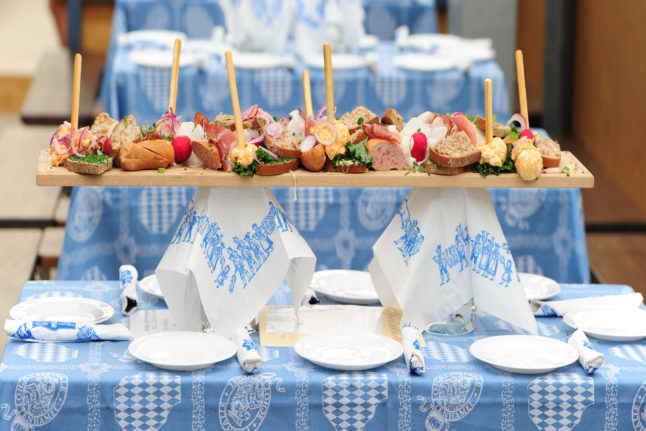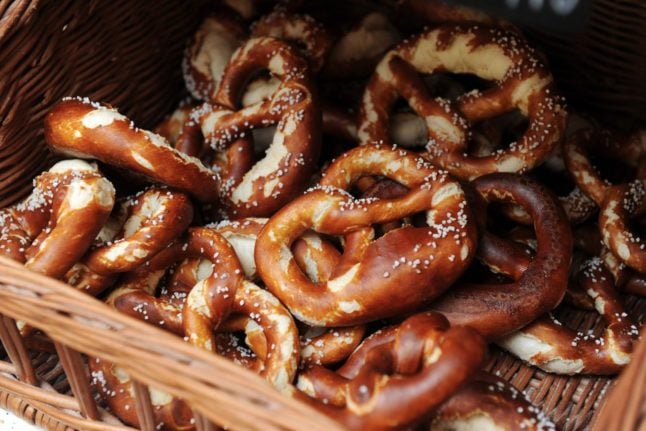“It’s hard to find good Swedish food in Stockholm – it’s probably easier to find a good Italian restaurant! And what’s worse, Swedish food is really expensive,” says Richard Råberg, the organizer of the hostel’s Meatball Experience programme.
And he should know. Hailing from Stockholm, Råberg works for the award-winning City Backpackers Hostel in Stockholm, only a few hundred meters from the Central Station in the heart of the city.
For a long time he was in charge of bar and sightseeing tours, but now he specializes in Swedish food.
Every Tuesday and Thursday evening, Råberg teaches an audience of mostly young tourists how to cook köttbullar, or Swedish meatballs.
“Here in Sweden we eat meatballs all the time,” Råberg says.
“And a lot of people visiting Stockholm like to know how to make them.”
And he’s right. “The Meatball Experience” is popular and the 13 places available for each installment of the course usually fill up in a flash.
This was the case when The Local went along too. Peter from Hong Kong and his friend Maaike from The Netherlands were two of the crowd wanting to take part.
“We thought cooking meatballs would be a fun and interesting thing to do while here besides the normal sightseeing,” Peter explains.
“And we’re both foodies,” Maaike adds.
Before anyone gets going with the meatballs, Råberg, who is also the head chef, allows everyone to sample some other Swedish specialties.
As a starter, he serves knäckebröd crisp bread and pickled herring, topped with chopped onions, chives, and caviar paste.
Not unlike many other visitors to Sweden, some of the eager chefs turned their noses up at the Swedish food and waited expectantly for the meatball lesson to begin.
While mixing together the ingredients — minced meat, one egg, spices (salt, pepper, white pepper, clove), breadcrumbs, cream and onions — seems easy to do, the kneading of the doughy mass is much harder, and requires more physical exertion than one might expect.
Click here for a step by step gallery of how the meatballs were made.
“Those who work the hardest now will get the most meat in their balls,” Manuel from Germany jokes.
On his way to a conference in Finland, he stopped off in Stockholm – and now finds himself elbow-deep in meatball mix.
Afterwards, it’s all about the sense of proportion – and when it comes to these balls size does matter – with one teaspoon being the perfect measure.
“You better not make the meatballs too big, or they’ll take forever in the pan,” chef Råberg warns.
“Have you seen Hell’s Kitchen? Gordon Ramsay’s my idol – I’ll come and yell at you if you don’t pay attention,” he says, with a sly wink.
And then, it’s rolling time. And even though 12 people are involved in rolling meatballs out of just three kilograms of mince, it’s not a quick process, but Abba’s “Super Trooper” in the background keeps the would-be chefs in high spirits.
Meanwhile, Råberg prepares the actual cooking part, heating up some butter in the pan.
“In the beginning you have to be really gentle with the meatballs. Try to keep them round and turn them, so they get brown all over.”
After only moments in the pan, the meatballs appear to be ready, but Råberg is quick to set the story straight.
“You might think they’re done. But they’re not,” he says, adding that it takes about 20 more minutes to get them all ready to be eaten.
The participants are very pleased with the food, once the meatballs have finished sizzling in the pan and they are allowed to sit down and dig in.
And it’s clear that the food is enjoyed by the tourists.
“My stepmother is Swedish. She cooks köttbullar a lot, but never told me her recipe. But now I can cook some as good as hers,” Maaike from The Netherlands says.
Coraline from France also plans to bring her new cooking skills home.
“It was a fun experience. I will definitely cook this for my friends back in France.”
One thing is certain and that is that learning from a real expert is much more reliable than taking after some other famous Swedish chefs… The example below is a particularly good example of how not to do it!
Susann Eberlein





 Please whitelist us to continue reading.
Please whitelist us to continue reading.
Member comments